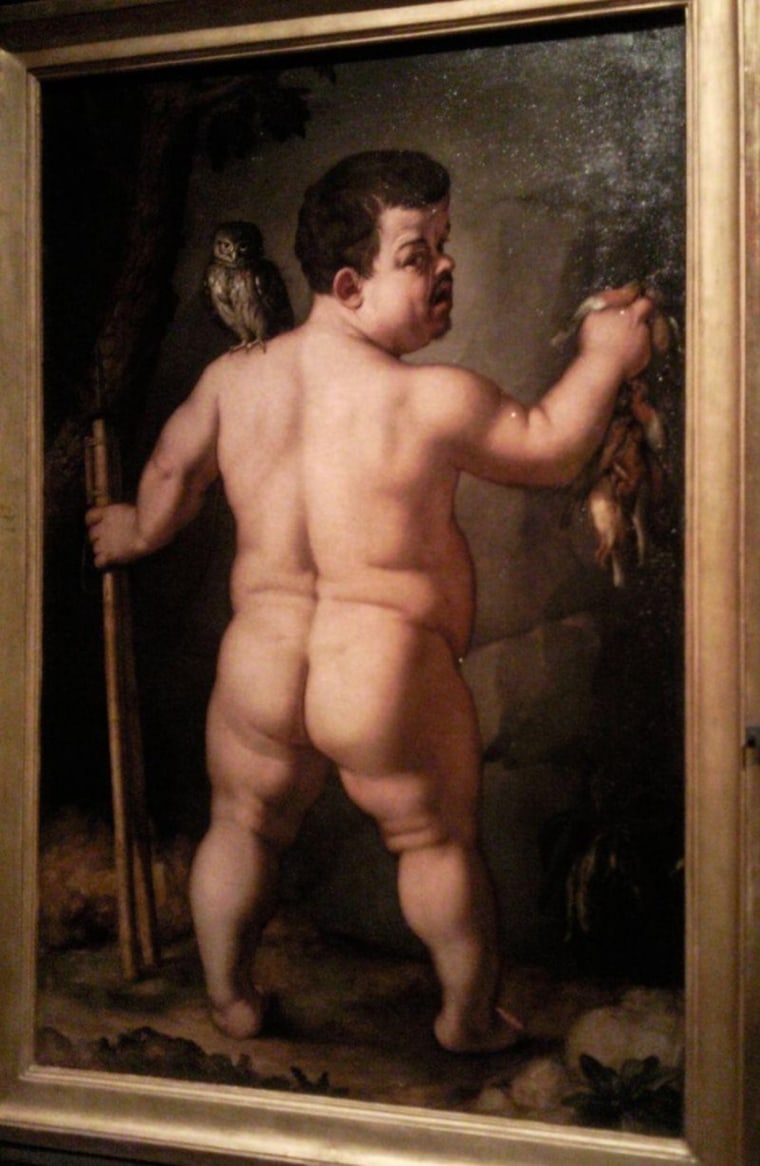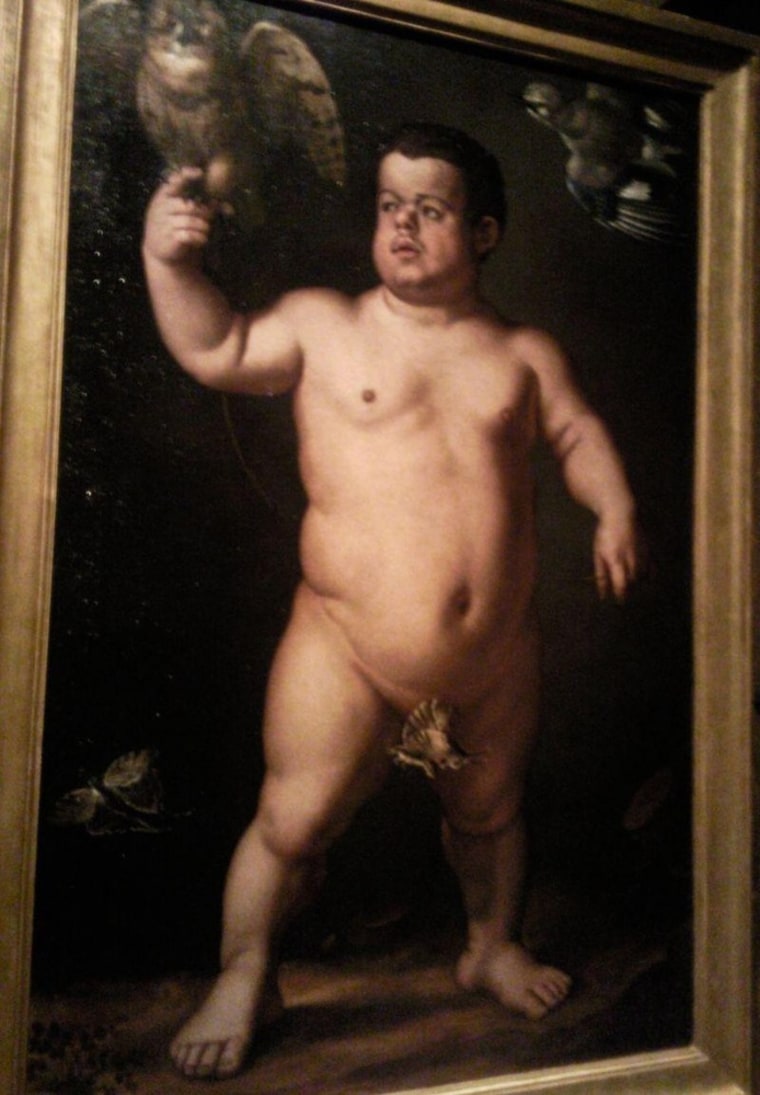The naked image of a dwarf who starred at the Medici court in the Florentine Renaissance, has been revealed after nearly three centuries of oblivion, Italian art experts announced last week at a press conference in Florence.
Known as the Portrait of Dwarf Morgante, the painting, a two-sided canvas which portrays a court jester, was made before 1553 by mannerist painter Agnolo di Cosimo, better known as Bronzino (1503-1572).
Long considered to be obscene, the full frontal view of the naked dwarf was painted over in the 18th century.
“Moralizing brushes added vine leaves and grapes all over, turning Morgante into a Bacchus serving wine,” said Antonio Natali, the director of the Uffizi Gallery and one of the curators of the show, said at a news conference last week.
The artwork has been freshly restored in the labs of the Opificio Delle Pietre Dure in Florence and put on display at the first ever retrospective of the Italian master, who is noted for his cold but realistic and sophisticated portraits of the Medici clan.
“The dwarf portrait is one of the centerpieces of this show. For the first time, we can see the real Bronzino painting,” Natali said.
Placed on a pedestal at the center of the room, the painting offers a frontal view of Morgante, posing with a hunting owl while large moths flutter around his private parts.
The rear view shows the deformed huntsman seen from the back, holding his trophy of birds.
Listed in a Medici inventory dated 1553, the portrait was moved to various Florentine collections, meanwhile losing its identity.
Ironically named after the giant Morgante Maggiore in the 15th-century epic poem by Luigi Pulci, the dwarf is recorded to have arrived at the court of Cosimo I de' Medici (1519-74), Grand-Duke of Tuscany, around 1540.

According to Vasari, the dwarf, also called Pietro "Barbino" (which means poorly done), was “clever, learned and very kind, the favorite of our Duke.”
Indeed, historic accounts reveal that in 1555 the Grand Duke granted Braccio di Bartolo (this was the real name of the individual affected by achondroplasia dwarfism) a honor, calling him “our beloved dwarf.”
As the Duke’s favorite jester, he was portrayed in several artworks. Sculptor Giambologna (1529-1608) mounted him on a dragon, while another sculptor, Valerio Cioli (1529-1599], immortalized him as the paunchy dwarf riding a tortoise in a sculpture at Boboli gardens.
According to Vasari, Bronzino’s work was unique.
“He made a full-length portrait of the dwarf Morgante, nude, and in two ways -- namely, on one side of the picture the front, and on the other the back, with the bizarre and monstrous members which that dwarf has; which picture, of its kind, is beautiful and marvelous,” Vasari wrote.
Dwarves were popular at the Medici court. They entertained and amused, being the subject of fascination, laughter and ridicule.
Morgante’s case was no exception. Records testify that he was often mortified, and even had to fight, naked, with a monkey.
“Although he had a privileged role, as a dwarf he suffered humiliation and physical violence by certain courtesans,” art historian Sefy Hendler wrote in the exhibition’s catalogue.
Made to respond to a heated debate over which art, sculpture or painting, was nobler, Bronzino’s double faced portrait offered different viewpoints -- just like a sculpture -- as it depicted a popular court scene which amused the Grand Duke. According to historical accounts, Morgante was often employed as a nocturnal bird hunter (the technique used a trained owl to capture little birds).
Moreover, the portrait, showing both the beginning and the end of the bird hunting, demonstrated that painting can depict the passage of time, which sculpture cannot.
“The newly restored portrait provides a unique evidence for the history of this character at the Medici court and shows that Bronzino is not only a great mannerist painter, but one of the masters of Italian art,” Natali said.
Bronzino. Artist and Poet at the Court of the Medici runs at Palazzo Strozzi in Florence, Italy, until Jan. 23, 2011.
